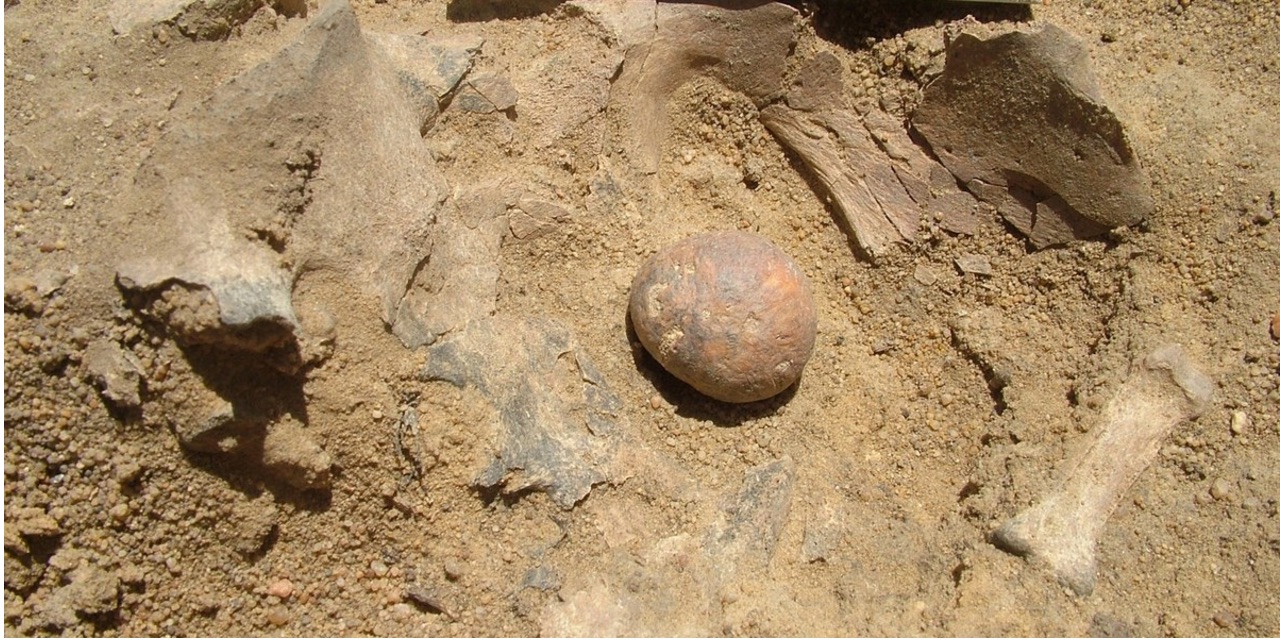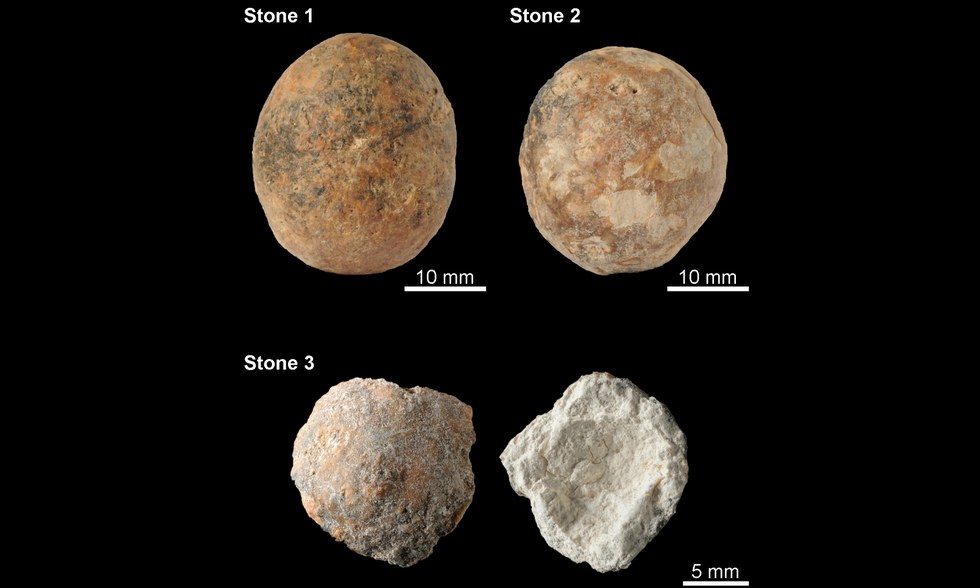Oldest Prostate Stones Ever Found Suggest a Man Was in Agony 12,000 Years Ago

Italian and British researchers investigating a prehistoric cemetery in central Sudan have found what they believe are the oldest prostate stones, revealing the disease affected men as early as 12,000 years ago.
The stones, as large as walnuts, were found in 2013 in the pelvic area of an adult male in a burial discovered in the prehistoric cemetery of Al Khiday. The cemetery lies on the left bank of the White Nile some 12 miles south of Omdurman (Khartoum).
The remains of the man, who likely experienced extreme pain in the course of the disease, were unearthed as a team led by Donatella Usai and Sandro Salvatori, at the Center for Sudanese and sub-Saharan studies in Treviso, Italy, investigated some 900 square miles in the prehistoric cemetery.
Usai and colleagues, who detailed their findings in the journal PLOS ONE, recovered 190 graves. The burials date to three different periods, from as early as 12,000 years ago to 2,000 years ago.
The oldest graves, dated as pre-Mesolithic, included 94 individuals, including the male affected by prostate stones.
Intriguingly, the man was buried facedown, as the majority of the pre-Mesolithic burials.
"The high frequency of prone burials rules out they are deviant burials. It rather suggests a funerary rite with a yet mysterious symbolic meaning," Donatella Usai told Seeker.
Get the world’s most fascinating discoveries delivered straight to your inbox.
RELATED: Kidney Spotted For First Time in Egyptian Mummy
The position in which the stones were found — one between the pelvic bones and two close to the lumbar vertebrae — immediately suggested the individual may have suffered from urinary bladder stones. The stones develop in the prostate, a gland of the male reproductive system located in the pelvic space.
At first researchers thought the stones might actually be just that — stones. But testing proved they had been formed in the man's prostate.
"The mineralogical composition, the heterogeneous and concentric microstructure of the stones and their density, much lower than that found in rocks, absolutely confirm a biogenic origin," Lara Maritan, at Padova University's Department of Geosciences, told Seeker.
To rule out the ovoid objects were kidney stones or gallstones, the researchers carried out a range of analyses.
"Pathological stones have differential mineralogical compositions," Usai and colleagues wrote.
Scanning electron microscope showed a peculiar structure made from calcium apatite crystals and whitlockite — an unusual form of calcium phosphate — which clearly pointed to the prostate as the stones' origin.
In addition, the researchers found bacterial imprints within the stones. This could indicate that active inflammation was present in the individual during his life.
The tall men and women who made up the pre-Mesolithic population of Al Khiday were rather healthy. Anthropological investigation revealed they did not suffer from chronic disease, apart from bad teeth, which was revealed by a high frequency of cavities found among the dental remains.
Overall, no significant disease, apart from the prostate stones, was found.
Demonstrating that prostate stones did exist more than 10,000 years ago is an extraordinary finding, according to bioarchaeologist Michaela Binder, a research associate at the Austrian Archaeological Institute in Vienna who is not involved in the study.
"Finding such a disease in association with a skeleton from an archaeological site opens a new window into health and living conditions in the past," Binder told Seeker.
Although it might be difficult to reconstruct how people in the past would have experienced or perceived pain, it's likely that the prehistoric man spent his last days in excruciating pain.
RELATED: Toothy Tumor Found in 1,600-Year-Old Corpse
Prostate stones are usually very small, asymptomatic and rather common in adults. But the large size of those found in the burial suggests a mechanical obstruction to the urinary tract. This would have made the man's life miserable.
"In modern clinical cases there is often lower back pain or leg pain, difficulties and pain when urinating. Given the size of the stones obstruction of the urinary tractus would have certainly been a problem and in times very uncomfortable and painful," Binder said.
According to the researchers, the localized symptoms may have advanced to more systemic ones, "causing pelvic dilatation, cystitis, renal scarring and kidney failure, potentially leading to the death of the affected individual," they wrote.
The prostate stones are the oldest found so far in the archaeological record. Previously, an 8,500-year-old bladder stone was found in the pelvis of an adult female buried in cave-tomb on the coast of Sicily.
"Our finding confirms this disease can no longer be considered a disease of the modern era. It also affected prehistoric people, whose lifestyle and diet were significantly different from ours," Usai said.
Originally published on Seeker.



